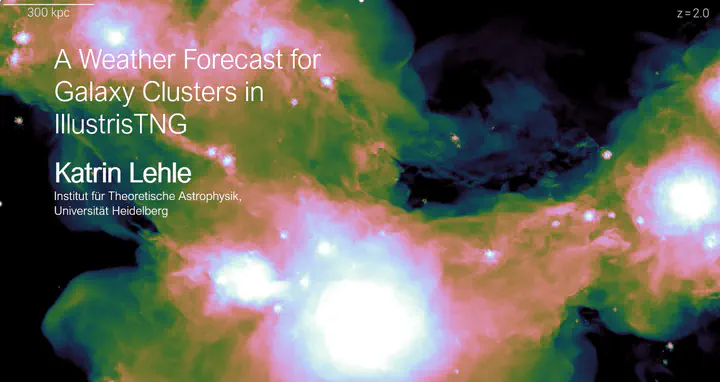
Abstract
I will discuss our results studying the thermodynamic properties in the intracluster medium (ICM) of galaxy clusters. The highly multi-scale gas structure and large dynamic range of spatial and temporal scales of the key physical processes makes numerical simulation of the ICM a computational challenge. In this work we use magnetohydrodynamical simulations from the IllustrisTNG suite (TNG50) together with the new TNG-Cluster project to study ICM gas physics in the full cosmological context, within the framework of a well-validated and comprehensive physical model for galaxy formation and AGN feedback physics. These simulations come with a large sample of well-resolved galaxy clusters including the “full” physics TNG model which allows us to study the heterogeneity and diversity of clusters. We study the fraction of galaxy clusters with a short central cooling time (cool-core clusters) based on different diagnostics as central electron density, central entropy, concentration and cuspiness. We investigate the astrophysical processes which are most effective in turning cool-core clusters in non-cool-core clusters. We study if mergers can be made responsible for the whole population of non-cool-core clusters. We also explore how the TNG model for SMBH feedback can produce episodic periods of self-regulation, leading to intermittent phases of cool gas abundance in the centers of clusters, which are then subsequently dispersed.